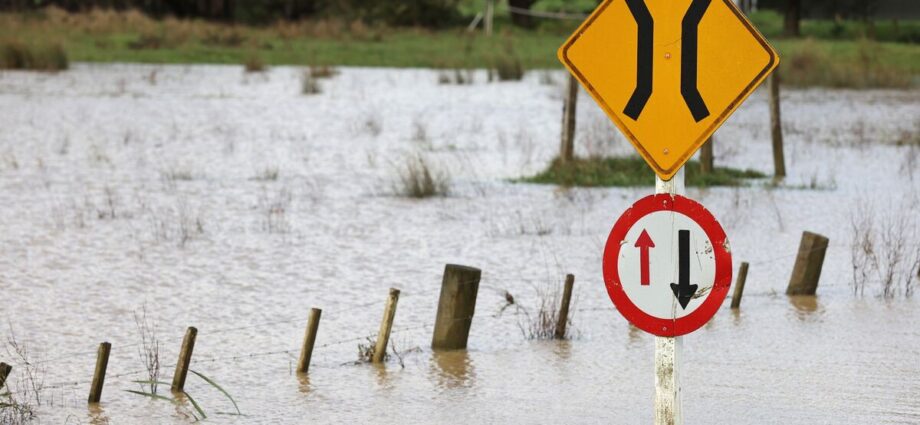PHOTO: Flood water inundates a paddock and roadside in Kaipara Flats, Auckland on May 10. Fiona Goodall/Getty Images
Recent research conducted by NIWA and the University of Auckland has unveiled concerning findings about the vulnerability of New Zealand’s housing to flood hazards. The study indicates that approximately 12% of the country’s housing value, estimated at $218 billion, is situated in flood hazard areas. The report highlights that a total of 441,384 residential buildings are at risk of flooding, comprising 282,395 houses valued at $213 billion and 158,989 appurtenant buildings valued at $5 billion.
More than 400,000 residential buildings in flood prone areas
The majority of these flood-prone properties are located in urban areas, with Auckland and Canterbury accounting for around half of the buildings identified. Additionally, the Wellington, Waikato, and Bay of Plenty regions have also been significantly affected. The research emphasizes the importance of understanding the frequency of potential flood exposure, considering that many buildings classified as exposed may only be at risk during rare flooding events.
The study’s limitations stem from its reliance on existing flood maps, which may not adequately account for extreme flood events such as Cyclone Gabrielle. To address this issue, the researchers suggest the need for updated flood plain maps and a comprehensive assessment of residential building exposure within these areas, particularly during rare events.
Despite the risks associated with flood-prone areas, the research demonstrates that construction in these hazardous zones peaked between 1960 and 1980. Although the pace of construction has slowed in subsequent decades, the total floor area and replacement value of buildings in flood-prone regions have continued to rise. Notably, the study reveals that even now, new houses are being constructed in flood risk areas.
propertynoise.co.nz to launch real estate industry recruitment site
Reports from earlier this year shed light on the concerning trend of building developments in flood-risk zones. Pressure was reportedly placed on council consent staff in the greater Wellington region to approve projects in flood-prone areas. Furthermore, it was revealed that over 15% of the state housing portfolio is situated on flood-prone land, and Kāinga Ora, the housing agency, intends to continue constructing new properties in areas prone to future flooding.
SOURCE: RNZ
Real Estate Agents: Who has the lowest and highest fees? WATCH
propertynoise.co.nz to launch real estate industry recruitment site















